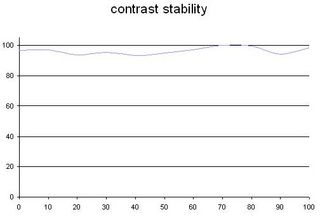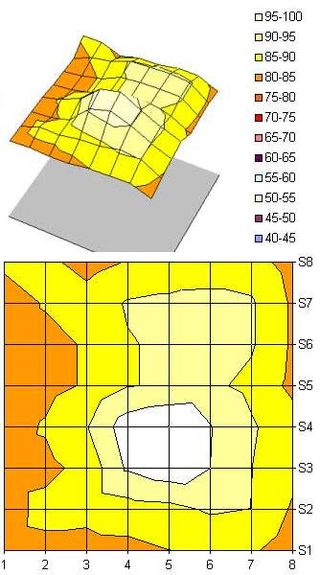The Secret Sauces of THG's LCD Tests
Contrast And Uniformity, Continued
Here is the contrast stability curve of the VP191b.

It's apparent that the contrast is very stable; you're free to choose a brightness setting that suits your needs. Nevertheless, if you set your screen to 80% brightness, then you will still have optimal contrast.
Finally, we will measure the spatial uniformity of the panel's brightness. In practice, some screens are brighter at the top than at the bottom of the panel, which can be irritating. So, our approach is to measure the brightness of 64 zones on the panel for a fixed level of brightness (50%, for example) to confirm its uniformity. Then we can reduce all the values measured into a percentage of the maximum value recorded.
Below is the spatial uniformity measured this way for the ViewSonic VP191b:

Several things are noticeable on this graph. Firstly, the overall uniformity isn't anything exceptional; most of the values being within 15% of the total range, which is fairly average. But the best results in this section still give uniformity between 10% and 5%.
It's also apparent that the upper left hand corner is brighter; something that is borne out by the results when displaying a black image. This is typical of the case with DVD playback. Some screens present flares in the black bands at the top and the bottom of the screen, which is just plain ugly.
Stay on the Cutting Edge
Join the experts who read Tom's Hardware for the inside track on enthusiast PC tech news — and have for over 25 years. We'll send breaking news and in-depth reviews of CPUs, GPUs, AI, maker hardware and more straight to your inbox.
Current page: Contrast And Uniformity, Continued
Prev Page Contrast And Uniformity Next Page The Practical TestsMost Popular

